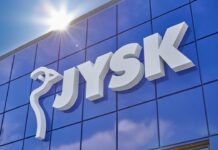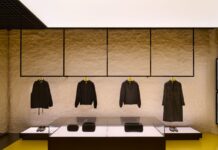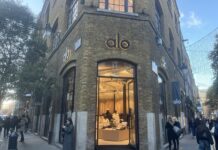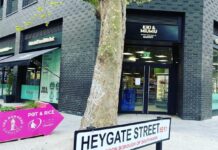The use of social media tactics and technologies by retailers in a bid to stand out from the crowd in an increasingly competitive market is nothing new. In fact, the retail sector was an early adopter of social media in its marketing strategies, as the rise of e-commerce fueled infinite opportunity on social channels.
This has impacted significantly on store interior design – an important part of the customer experience as retailers work to bridge the gap between online and offline. The 2017 Digital Trends in Retail report highlighted that 54 per cent of retailers cite customer experience as their top strategic priority in 2017, while 29 per cent cite social media engagement in their top three priorities. So how can insights from social media activities help drive better store design to enhance customer experience?
Start with social listening
Using social listening tools to understand what is being said about the store, products and brand, as well as the topics consumers are discussing, provides invaluable insights to help store designers provide a better experience for customers. From free tools like Google Alerts to the more advanced such as Buzz Radar, knowledge of online customer conversations about the brand will provide a better foundation for tailored store design.
Aligning brand messages on social media with physical demonstrations of these brand values in store will help create the all-important authenticity that consumers crave. In a world where bricks and mortar is battling against the deepening lure of mobile screens for customer purchasing activity, store designers must make the most of available insights to ensure the physical store experience attracts customers and meets their expectations, making the most of that physical touchpoint.
Build a community of brand advocates
Brand advocates can be a great channel in driving footfall to in-store events and provide effective insights on customer experience which can help inspire better retail design. Retailers can encourage word of mouth advocacy on social channels through outreach – working with a range of influencers from micro influencers with deeply engaged audiences, through to celebrity fans of the store. Giving micro influencers VIP status for in-store events and previews is an effective tactic, whilst celebrity fans could be used to feature product placement, or for the more daring, take over social channels.
The use of influencers and brand advocates to build communities around in-store events also presents opportunities to create unique social media content, and seed out amongst influencer profiles for greater brand reach and engagement – as brand advocates will direct their own audiences to the events. Homewares retailer Habitat executed this strategy when it held an event called the Light Club, where DJs played in-store, with the new lighting collection providing a nightclub-style feel. The event itself brought together bloggers and other influencers in one place, resulting in the combination of these people building a new audience, in addition to their own existing audiences online. The physical store experience is crucial in this scenario.
Signposting to social media and using real-time communication strategies
The impact of in-store design on social media should not be underestimated. Ensuring social media channels are correctly signposted in-store is crucial to linking online and offline experiences. POS display signs are an obvious opportunity to drive social media interaction, but other ideas could include customer reviews on products and signposting of help channels. Snapcodes – Snapchat’s latest QR code type feature – can also be used to enable store visitors to access unique content in-store, engaging the use of social in actual store sales.
Additionally, use of social media visualisation tools to pull through social media content in-store (such as TINT), is a great way to aggregate the best user-generated content for display in store – thus encouraging customers to join in the online conversation.
Integrating social media into store design is vital in impacting shopping trips and experiences for customers. Understanding the most compelling content, from offers and deals to new products, or changes to the store interior or window display/POS, is important in tailoring the experience. By placing social at every customer touchpoint in the marketing mix, increased visibility of the brand online and the products it sells can be achieved.
With people undoubtedly spending less time in shops, retail designers must use social media to delve into the mind of the customer, and use those insights to ensure the physical store experience hits the mark, marrying online and offline activities to continually focus on the best customer experience – the Holy Grail in retail right now.















